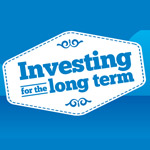
lost my super
There is over $17 billion of lost superannuation and more than $677 million in old bank, credit union or building society accounts, shares and life insurance policies waiting to be found.
Lost shares, bank accounts and life insurance
Australian Securites & Investments Commission (ASIC) https://www.moneysmart.gov.au/tools-and-resources/find-unclaimed-money/unclaimed-money-search
has an Unclaimed Money Search tool. If you have every moved address often, moved overseas, or simply forgotten, you could have unclaimed money.
There is unclaimed money in:
■ Bank accounts – $330 million
■ Shares – $295 million
■ Life insurance – $52 million
Superannuation
It has now been 20 years since compulsory Superannuation Guarantee superannuation contributions commenced on 1 July 2002.
If you have ever changed your job, moved address often, moved overseas, and/or changed your surname then you could have lost superannuation.
Your superannuation could either be:
In a Superannuation Fund
You may need to work out which superannuation fund each of your old employers paid into & then contact each of those superannuation funds. If you cannot remember the names of your old employers, your group certificates are a good place to start.
In an Eligible Rollover Fund (ERF)
If a superannuation fund is unable to contact you, as they do not have a current address (they have received returned mail) or a contribution has not been received after a certain period of time, a super fund may roll your super to an ERF.
An ERF has no investment options (your money will be invested in a default option), usually has no insurance and can only accept limited types of contributions (they cannot accept regular SG contributions from an employer).
Transferred to the Australian Taxation Office – Unclaimed Monies
ATO-held super includes amounts paid to the ATO by employers, super funds (if they cannot contact you) or if the ATO have been unable to find an account to transfer the money to, the ATO will hold it for you.
Previously amounts less than $200 were sent to the ATO. From January 2013 the threshold will be amounts less than $2,000.
Superseeker – This is the ATO’s database which holds information about lost and unclaimed super held by all super funds in Australia (updated 6 monthly) and by the ATO.
You can either do a quick search using your name, date of birth and tax file number or register for Superseeker https://onlineservices.ato.gov.au/Default.aspx?PageName=YourSuper to:
- Check your current super accounts that money has been paid into in the last two financial years
- Find lost super
- Find ATO held super
- Transfer your super to the super account you want
Once you have registered online for Superseeker, you can access your super information any time.
What should you consider before transferring super?
Putting your entire super into one account means you will only pay one set of account fees and charges. It also makes it easier to keep track of your super.
However, there are some important factors to consider before transferring your super:
- Differences in the fees can make a big difference to what you will have to retire on – for example, a 1% increase in fees can significantly reduce your final benefit.
- The fund you want to leave could add administrative fees, and exit or withdrawal fees.
- The fund you want to transfer to may charge entry or deposit fees.
- The fund you want to leave may insure you against death, illness or an accident which leaves you unable to return to work and if you leave this fund, you may lose these insurance entitlements – check if the other fund offers comparable cover.
- The fund you want to transfer to may not accept transfers of ATO-held or super fund-held money – check before starting your transfer.
If you are unsure what to do, you should seek financial advice or contact your super fund.
|
There are no fees or charges for transferring ATO-held super money into a super fund account. |
And lastly
State & Territory bodies for unclaimed monies
- They may hold unclaimed super from private sector super funds where the super became ‘unclaimed’ before 1 July 2007.
For example, the SA Department of Treasury and Finance will receive unclaimed superannuation only when the member is at the eligibility age of 65 or deceased, the head office of the superannuation company is registered in South Australia and the Superannuation Company cannot locate the member.
If you are not at the eligibility age of 65 you will need to do a search on the ATO’s Superseeker or telephone the ATO on 13 10 20 or alternatively contact the superannuation fund itself.
- Unclaimed monies from companies based on the State or Territory the company was located in. This may be different to the State or Territory you live in. Companies must hold the money for six years then advertise in the SA Government Gazette for two prior to sending the money to DTF. Therefore a company must hold unclaimed amounts for eight years and pay Treasury on the ninth year
Department of Treasury and Finance can hold unclaimed:
- ·dividends (not company shares)
- ·deceased estates
- ·liquidation disbursements
- ·interest
- ·unpresented/void/stale cheques
- ·wages/salaries
- ·trust accounts
- ·refunds
- ·unclaimed money from other government departments/agencies prior to 1 February 1998 (after this date each department/agency administers its own unclaimed money register)
- ·bank account money prior to 1989
- ·insurance policies prior to 1992
You will need to contact each of the state and territory bodies. If you search on the Victorian State Revenue Office, you are able to search all states.
| Contact details for state and territory bodies
|
|
|
|
 Many people may think financial planning is all about retirement. It’s not. Financial planning is about making the most of what you have – at every stage in life. Whether it’s investing, superannuation or minimising tax; whatever your stage in life, financial planning can make a difference.
Many people may think financial planning is all about retirement. It’s not. Financial planning is about making the most of what you have – at every stage in life. Whether it’s investing, superannuation or minimising tax; whatever your stage in life, financial planning can make a difference.








